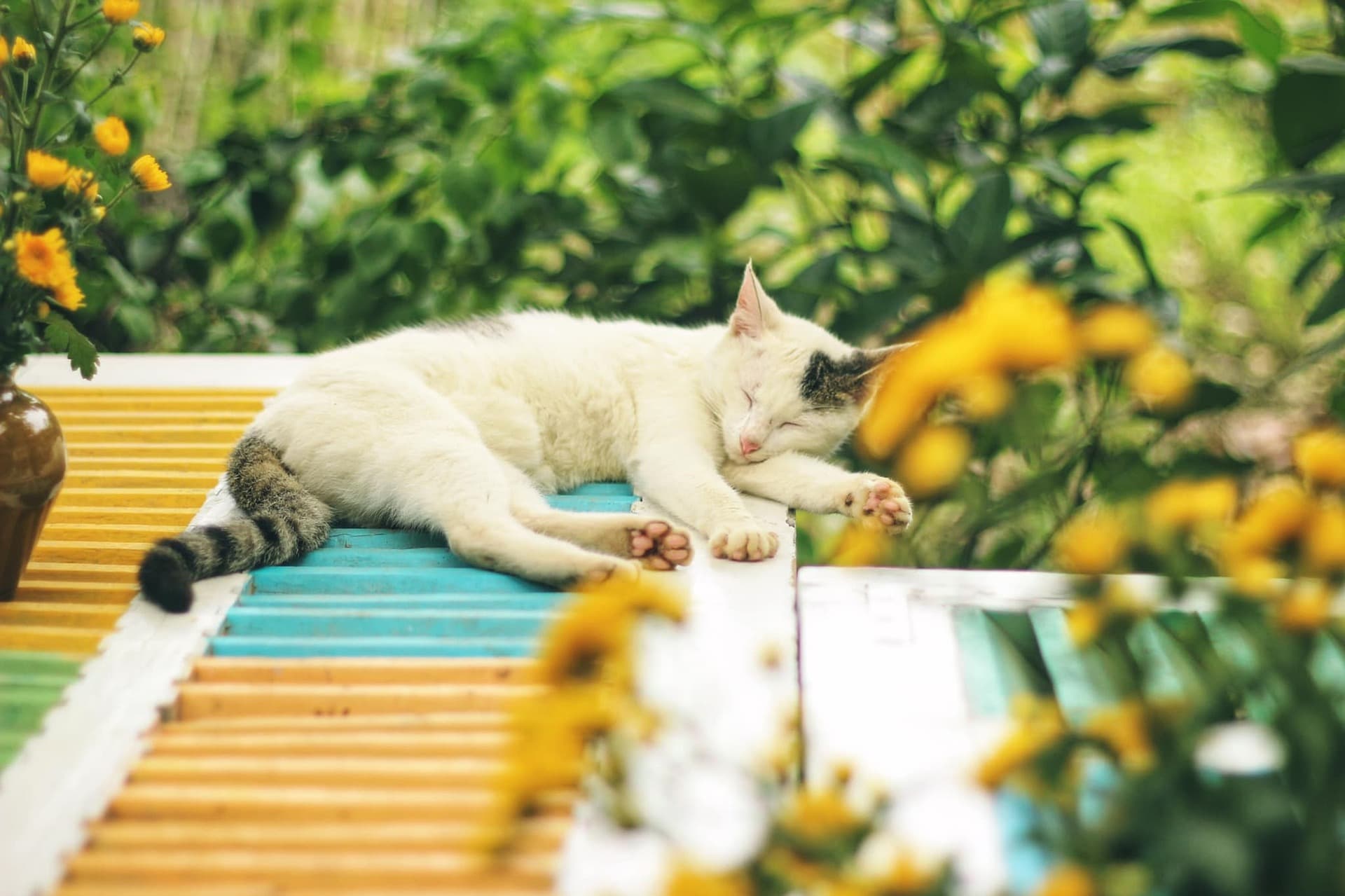As the sun beats down and temperatures soar, our cat companions may find themselves facing a silent but deadly threat: heat stroke. While we often associate heat-related illnesses with dogs, cats are equally susceptible, if not more so, due to their unique physiology and behaviors.
So, as summer approaches and temperatures rise, we must stay vigilant about our cats' health and be aware of the potential dangers hot weather brings. With their thick fur coats and limited ability to regulate body temperatures, cats are particularly susceptible to heat-related illnesses like heat stroke.
In this comprehensive guide, we’ll explain the nuances of heat stroke in cats, the unmistakable signs, underlying causes, preventative strategies, and what to do if you suspect your cat or kitten is suffering. Let’s ensure we do everything to keep our pets safe during the summer!
What Is Heat Stroke in Cats?
Heat stroke occurs when a cat’s body temperature rises to a dangerously high level, typically over 105°F (40.5°C). If left untreated, heat stroke can lead to severe organ damage or even death.
According to PetMD, the most common cause of heat stroke is cats' inability to escape extreme heat, such as being left in a car or outside without adequate shade. It can also occur in cats that exercise too vigorously on hot days or expend a lot of energy if they have episodes of seizures or tremors. Flat-faced cats may also be at higher risk as they may struggle to breathe on warm or humid days.
Heat Exhaustion vs. Heat Stroke
Heat exhaustion is an earlier stage of heat-related illness often characterized by heavy panting, weakness, and increased heart rate. If not addressed promptly, it can progress to heat stroke, a medical emergency.
Signs of Heat Stroke in Cats
If your cat starts to display any of the following signs after being exposed to extreme heat for some time, you should seek immediate veterinary attention.
Signs of heat stroke in cats include:
excessive panting,
drooling,
vomiting,
lethargy,
staggering,
seizures,
and unconsciousness.
It’s crucial to recognize these symptoms promptly to provide timely intervention.
Causes of Heat Stroke in Cats
Several factors can cause heat stroke, including high temperatures, humidity, lack of shade, confinement in hot environments like cars or poorly ventilated spaces, and vigorous physical activity during hot weather.
Cats most at risk for heat stroke include:
Outdoor cats, especially on very hot days or humid days, or in areas where there is little shade or water available
Indoor cats where there is no power or air conditioning in the home
Flat-faced (brachycephalic) cats on any warm day
Obese cats
Senior cats
Kittens 4 months old or younger
Cats with heart, respiratory, or neurological conditions (such as seizures)
It’s important to be mindful of how your beloved cat may be at risk for heat stroke and take preventative measures to protect your kitty.
How to Prevent Heat Stroke in Cats
Preventing heat stroke in cats primarily involves ensuring access to cool, shaded areas and plenty of fresh water and never leaving them unattended in vehicles. Additionally, grooming long-haired cats to remove excess fur can help them regulate their body temperature more effectively.
Proper precautions allow you to keep your cat cool, comfortable, and safe even on the hottest days of the year.
Here are some tips for preventative steps to take, according to Purina:
Supply your cat with plenty of water
Consider giving your cat wet food to add a little extra hydration
Offer your cat plenty of shade to lay under
If you have a predominantly indoor cat, ensure the area is well-ventilated and climate-controlled
NEVER leave your cat in a parked car
How to Respond to a Heat Stroke
If you think your cat is experiencing heat stroke, immediately move them to a cooler environment, offer water to drink (but don’t force it), and wet their fur with cool (not cold) water. It’s critical to seek veterinary attention promptly, as heat stroke can quickly escalate and cause irreversible damage.
The first step in treating heat stroke is returning the body temperature to a normal range. This is usually done through IV fluid therapy. Your vet will also monitor your cat to see how alert they are when it comes in for treatment and whether they become more or less alert during treatment.
Heat stroke patients also often experience low blood sugar. Glucose can also be given through IV fluid, at which time liver and kidney functions will also be monitored.
Conclusion
Heat stroke is a serious and potentially life-threatening condition for cats, especially during hot weather. By understanding the signs, causes, and preventative measures outlined in this article, pet owners can take proactive steps to keep their feline companions safe and comfortable during summer.
Remember, your cat may not know how to or be able to communicate the overheated feelings they may be experiencing, so it’s important to keep a close eye on your beloved feline friend, especially in hot weather!
Frequently Asked Questions
Can cats sweat?
Cats have sweat glands on their paw pads, but they’re not as efficient at regulating body temperature through sweating as humans are. Instead, cats primarily rely on panting and seeking cooler environments to cool down.
How hot is too hot for cats?
Cats can start experiencing heat-related stress when temperatures climb above 90°F (32°C). However, factors like humidity and access to shade and water also significantly determine how well a cat can tolerate heat.
How to treat heat stroke?
If you suspect your cat is suffering from heat stroke, move them to a cooler area, offer water, and wet their fur with cool water. However, immediate veterinary attention is crucial for proper treatment and monitoring.
What are overheating symptoms?
Symptoms of overheating in cats include excessive panting, drooling, vomiting, lethargy, staggering, seizures, and unconsciousness. Recognizing these signs early can help prevent serious complications.



